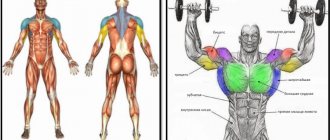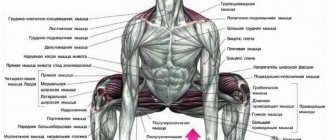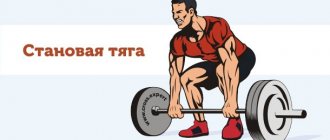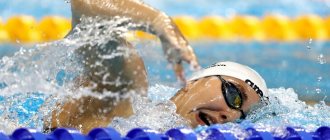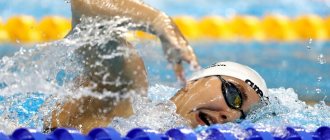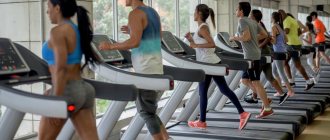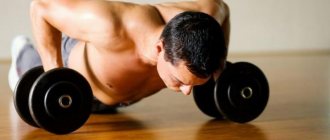Author: Margarita Popova, adaptive physical education specialist, training department specialist #Sekta
Getting up, a glass of water, morning work, breakfast - this is how the day of many students and graduates of our School begins. Morning workout on an empty stomach is one of our oldest recommendations. It appeared back in the days of LiveJournal and is still successfully used today.
Often, as soon as students notice the results of short morning workouts, they begin to lengthen their workouts, bringing them to 45 - 60 minutes or replacing them with a long morning run on an empty stomach. In this way they hope to get the greatest result.
Fasted training seems like a very attractive prospect. During the night, the body almost completely depletes glycogen (energy) reserves in the muscles. Since there is no glycogen, physical activity should, as it were, provoke the body to take the necessary energy from fat reserves. It sounds logical, but in reality it works differently. In this article we will analyze this misconception and tell you why short morning exercises are effective.
Is it possible to do a workout on an empty stomach?
The answer to this question depends on many variables: duration and intensity of exercise, general physical fitness, health status, type of training, time of day, number of hours since your last meal, etc.
If we bring all of the above to a single denominator, it turns out that a short workout at a slow or medium pace in the morning on an empty stomach and in the absence of serious health problems is quite acceptable. And when losing weight it is very relevant. If a light 20-minute exercise, jogging or walk is not enough for you, then having a snack beforehand definitely won’t hurt.
In order for the belly to go away, you need to train and it is advisable to constantly wear a special corset
Alexander:
“The corset does not have any effect on fat burning processes. I recommend training in a belt for those who work with heavy weights. For girls, these are squats from 50 kilograms and leg presses from 150 kilograms.
If you wear a corset all the time, you can, of course, narrow your waist by compressing the lower rows of ribs. They are more mobile and can, with constant compression, take on a new position, thereby making the waist narrower. But this is only if you wear the corset constantly, taking a break only to sleep. But it’s not very comfortable or useful.”
Fasted training: does it make sense?
Exercising on an empty stomach is ideal for burning fat. Therefore, when losing weight, they definitely make sense. Our body is a very cunning mechanism that will not work at a loss. Under increased loads, it primarily uses fresh fuel - calories received during meals.
If the workout takes place on an empty stomach, then glycogen comes into play - a strategic reserve from the liver and muscles. And only when its reserves are depleted, the body begins to burn fat. Simply put, cardio training on an empty stomach allows you to get to your cherished goal without unnecessary preludes. With strength training, everything is somewhat more complicated. But more on that later.
CONCLUSIONS
Long-term cardio training on an empty stomach is no more effective for weight loss than the same training after eating. For beginners, “hungry” training is not even safe due to the depletion of the body’s energy reserves overnight. A hypoglycemic state can reduce concentration and lead to injury.
In the morning, you should use short, high-intensity workouts that will help you wake up and start all metabolic processes. And before a long workout, be it strength, high-intensity or cardio, you should eat 1 - 1.5 hours before. It is advisable that meals contain complex carbohydrates, this will increase performance.
Short morning workouts in any format - be it a five-minute joint warm-up or a short fifteen-minute intensive workout - definitely benefit the body.
If you want to lose weight, add a morning workout. Thanks to the novelty effect, you will be able to work with your body more productively. When you start to notice that intense short workouts have stopped working, switch to joint gymnastics. It will help you wake up faster and not lose the habit of morning activities.
References: 1. B. Schoenfeld, Does Cardio After an Overnight Fast Maximize Fat Loss, Strength and Conditioning Journal, Feb 2011; Vol. 33 2. B. Schoenfeld, A. Aragon, Body composition changes associated with fasted versus non-fasted aerobic exercise, J Int Soc Sports Nutr. 2014; 11:54 3. Fasted Exercise for Faster Weight Loss, International Sports Sciences Association (ISSA) 4. The Truth About Fasted Cardio – Jim Stoppani, Ph.D 5. Fasted Cardio and Fat Loss – Q&A – Lyle McDonald 6. D. Yu . Volkova, The influence of morning exercises on the performance of classical university students, Bulletin of Chelyabinsk State University. Education and healthcare. 2014. No. 2. pp. 36–396 7. Brad Pilon, Eat Stop Eat, Strength Works, Inc. 2007
Fasted training: pros and cons
First, let's look at the benefits of training on an empty stomach:
- Accelerated burning of fat deposits.
- Normalization of blood sugar levels by increasing insulin sensitivity.
- Increasing physical endurance during aerobic (cardio) training.
- Improving appetite, which is very important in the morning.
However, there are also a lot of disadvantages to such activities. Among them:
- Increased production of stress hormones and, as a result, weakening of the body’s defense systems.
- Fatigue quickly, forcing you to finish your workout earlier than usual.
- Increased risk of overtraining.
- There is a high chance of dehydration when training in the heat, since glycogen in the muscles is responsible for retaining fluid.
- Lack of progress in muscle growth and a high probability of reducing the already gained useful mass.
However, the main harm of training on an empty stomach is the possible deterioration of well-being. You should stop exercising immediately if the following symptoms appear:
- severe fatigue;
- stomach pain, heartburn, nausea;
- dizziness, headache;
- hand trembling.
Personal experience
Despite the small amount of research, many practicing trainers talk about the effect of short morning sessions.
Jim Stopanni , a bodybuilding professional with a PhD in exercise physiology and biochemistry and the author of numerous articles and scientific papers on fitness and healthy living, notes that short fasted cardio helps his clients get rid of fat in the most problematic areas.
When a person has been training for a long time and has achieved good shape, but “stubborn” fat remains in small amounts on the stomach and thighs, Jim suggests looking for a way out in morning workouts. He does not provide a scientific basis for this effect, but only talks about many years of coaching experience.
Lyle MacDonald , a sports physiologist and specialist in body recomposition, supports Stopanni's point of view. He notes that such training will be especially effective for people who already have low levels of subcutaneous fat but have problem areas.
With a large volume of subcutaneous fat, blood supply to the problem area is reduced, which leads to even greater growth, since the breakdown and release of fats into the general bloodstream is limited.
| Therefore, it is impossible to remove a large amount of fatty tissue from the desired areas only through morning training, but it is quite possible to cope with a specific problem area with an already toned body. |
The experience of our students also confirms the effectiveness of short morning workouts. In the article #Tips of Approach, we have already described options for working with them: everything we have achieved at the cost of our own experience.
In 15 minutes of morning training (in which the intense part is only 5 - 10 minutes), you will receive energy from glycogen residues in the muscles and liver and partly from fat.
| From observations of our students, we can conclude that morning training is very effective for beginners. The “novelty effect” is triggered when the body is not yet accustomed to such loads. Over time, the body adapts to working out in the morning. |
This doesn't mean you need to make your morning routine endlessly difficult. Take a break. Leave only the joint warm-up, which helps to “wake up” the joints, and return to intense morning workouts after a couple of months, changing the exercises. Then they will be effective again for a while. You can learn more about how to balance between periods of intense training and rest in the article “Periodization of the training process.”
Even if you don’t have a goal to lose weight or “pump up,” morning exercises should not be ignored. Remember the benefits of joint warm-up or so-called morning hygienic exercises, which we were told about back in kindergarten.
In the morning, the body and brain are slightly slowed down, this is normal, because during sleep the processes of inhibition of the nervous system predominate in the body.
| Normally, a person needs about 2 hours after waking up to get to a “working” state. Morning exercises help reduce this time and enable the optimal regime in a shorter period of time. |
Gymnastic exercises increase the rate of heart contractions, therefore, increase the flow of oxygen to organs and systems after long sleep, increase the depth of breathing, slightly speed up metabolism, and increase the tone of the nervous system (the reaction to various stimuli returns to normal, “lethargy” goes away).
The positive effect of morning exercises also extends to the gastrointestinal tract. Blood actively flows to the abdominal area, a kind of massage of the internal organs occurs due to tension in the anterior abdominal wall.
In addition, this is an additional portion of endorphins in the morning. Therefore, if your goal is to improve your body’s health, then joint exercises and a few simple exercises for 5 to 10 minutes will be enough.
Strength training on an empty stomach
Is it possible to do strength training on an empty stomach? The vast majority of physiologists and trainers agree that this is a very bad idea. As mentioned above, due to glycogen deficiency, the body has to use other resources. And if a person does not have problems with excess weight, then he will have to pay with muscle mass. And this is a nightmare for any bodybuilder.
However, there is still a place for adequate fasted training in bodybuilding. For example, during the drying period, when athletes burn off water and subcutaneous fat in order to outline the muscular relief. But here we are talking about cardio, not strength training. To preserve muscle mass before such training, it is recommended to take special protein supplements or vitamin complexes.
In other cases, training in the gym on an empty stomach is contraindicated.
Cardio training on an empty stomach
As already emphasized above, fasted cardio is only permissible with short-term and low-intensity training. With this approach, your classes will be safe and as productive as possible. Long-distance running or interval training is strictly contraindicated in this case.
The average duration of aerobic exercise on an empty stomach is 40 minutes, but for people with a low level of physical fitness, it is enough to do 15-20 minutes a day.
Refusal of food before the start of training should not extend to the drinking regime. In addition to water, sweet tea or coffee is also important (especially in the morning). This will not affect your figure in any way, but will help the body mobilize strength for the upcoming work.
Nutrition for gaining muscle mass
Pre-workout nutrition
We recommend drinking a protein shake 30 minutes before training. The proportion of protein should be 0.22 g per 1 kg of your body weight. With a protein shake, we recommend eating a fruit with a low hypoglycemic index. For example, apple, pear or berries.
You can also drink strong coffee or tea without sugar 30 minutes before class. This promotes the production of epinephrine and norepinephrine, auxiliary hormones for the breakdown of fats. In this case, the maximum amount of fat will be converted into fuel, and glucose and amino acids will be preserved to a greater extent.
Post-workout nutrition
20 minutes after training, we recommend eating protein foods. Since at this time your body begins to actively convert carbohydrates and consume proteins for muscle recovery.
Any protein food will do, but it is high quality and not fatty. Since fat interferes with the flow of protein into the blood. The supply of protein is currently aimed at building muscle fibers, and its absence will lead to a decrease in muscle mass.
Alternative opinion
- The processes of anabolism - protein synthesis - do not begin until oxygen consumption and energy homeostasis are restored in the cells. Therefore, protein nutrition becomes relevant only after a day, but not earlier than 12 hours. Based on this, protein nutrition is more important before training.
- After training, it is recommended to consume carbohydrates in liquid form. Ideally, cranberry or grape juice. It is best to consume 1 g of juice carbohydrates per kilogram of desired body weight (a glass of grape juice - 38 g of carbohydrates, cranberry juice - 31).
- After training, avoid drinks that contain caffeine and block glycogen redistribution for muscle recovery.
Please note that nutrition for gaining muscle mass and for losing weight are different. Therefore, choose your nutrition based on the goal and type of workout.
Which workout on an empty stomach is healthier: morning or evening?
Of course, the most useful (including for fat burning) training is on an empty stomach in the morning. The body recovered overnight and is ready to work, even despite the forced postponement of breakfast. After eating, the strength will finally return, and by that time the body will be ready for any challenges of the new day.
Another thing is training on an empty stomach in the evening. Fatigue accumulated during the day is a bad motivator, and all a person’s thoughts are already about the upcoming rest. However, sprinting before bed is not at all necessary. A short walk or light exercise is enough. Moreover, evening training should be half as long as morning training. The following table will help simplify the task of organizing active leisure time during the day:
Drinking regime
In addition to eating before and after training, you need to know when and how much water to drink.
Water is an important component for our health. It speeds up metabolism, improves body performance, promotes weight loss and muscle growth. Without it, remaining water will accumulate in the body, causing swelling and worsening overall health.
On average, experts recommend drinking 1.5-2 liters of water. However, this number is just a guideline. For everyone, the water norm is individual and depends on various factors (age, level of physical activity, diseases and much more). You can calculate your water intake yourself or by consulting your doctor.
Before training
Before training, we recommend drinking about 0.5 liters of water without gases.
During training
You can drink water every 15 minutes during your workout. Take small sips to help the water be absorbed into your body faster.
What to eat before training in the morning on an empty stomach when losing weight?
High goals are not a reason to be deprived of small joys. Certain relaxations when training on an empty stomach for those losing weight are acceptable and even necessary. Here are examples of simple and healthy pre-workout snacks:
- a glass of low-fat kefir or yogurt with pieces of natural fruit and a pinch of cinnamon;
- a jar (or bag) of baby applesauce;
- 1 banana;
- ½ protein or energy bar;
- a sandwich made from whole grain bread with 1 tablespoon of jam or marmalade;
- 1 boiled egg + slice of fresh cucumber;
- a glass of freshly squeezed fruit juice;
- ¼ tea cup of dried fruit.
What should your post-workout breakfast be like when losing weight?
Let's move on to the fun part. Have you worked hard, have a beastly appetite, and now you’re afraid of losing your mind by getting a hundred or two extra calories? Then write down or memorize simple recipes for proper breakfasts:
- 150 g of boiled buckwheat or brown rice with a piece (100–150 g) of boiled or baked chicken breast and half a bell pepper.
- 150 g of durum wheat pasta with a piece (100 g) of boiled or baked fish.
- ½ cup of oatmeal, soaked in kefir or milk the night before, with chia seeds, berries or pieces of fresh fruit.
- An omelette of two eggs with vegetables, boiled potatoes (2-3 small tubers), a glass of natural fruit juice.
- Oatmeal cake. To prepare it you will need the following ingredients: 1 egg, 1 crushed banana, 2 tablespoons of oatmeal, 2 tablespoons of low-fat milk and 1 teaspoon of honey. Mix, place in a silicone mold and bake for 20 minutes at 180°C. Simple, tasty and low calorie!
Nutrition for weight loss
Pre-workout nutrition
We recommend eating a large meal 1.5-3 hours before training. The emphasis is on complex carbohydrates. For example, buckwheat, brown rice or whole grain bread. You can combine protein with complex carbohydrates. Boiled/stewed/baked chicken, eggs or tuna are perfect for this.
20 minutes before class you can eat natural yogurt and fruit.
Post-workout nutrition
After an hour-long workout that includes cardio and strength exercises, you should not eat for 2-3 hours.
Alternative opinion
- Eating after a workout is acceptable within half of the calories burned. The number of calories burned will depend on body weight, type and duration of training, and its intensity.
- After 3 hours, you can take protein and carbohydrate foods in a ratio of 1:4. Carbohydrates are necessarily complex. Not cookies and sweets, but cereals, vegetables, grain bread. Proteins - fish, lean meat.
- 5 hours before training, exclude protein foods from your diet.
Fasted training for fat loss: additional recommendations
You can argue for a very long time about what is better - training on an empty stomach or after eating. One way or another, half the success of losing weight lies in proper nutrition, but switching to a healthy diet turns out to be an impossible task for many. And the main obstacle is an excessive appetite, which reaches its peak in the evening. And this is by no means a normal feeling of hunger that occurs after a high-impact workout. Kilo Light was created .
The fundamental feature of the drugs in this series is the absence of the effect of imaginary weight loss, when kilograms are lost due to laxative or diuretic effects. Each component of Kilo Light directly or indirectly affects weight loss mechanisms.
Thus, chromium picolinate helps reduce unhealthy cravings for food, and synephrine (a substance synthesized from citrus fruits) in combination with B vitamins and L-carnitine activates fat utilization processes. Another important area of Kilo Light's is stimulating the thyroid gland, problems with which often lead to weight gain. White cinquefoil root helps with this .
In turn, dandelion root in tandem with dihydroquercetin and bee pollen provides additional support for connective tissue, reducing the risk of developing varicose veins, cellulite and other unpleasant consequences of increased weight loss.
Let's add to this the tonic effect of green tea extract - an important component of the morning preparation of the series. This is especially true in the early hours, when waking up before the alarm clock is akin to a feat for many. And an evening remedy containing the amino acid tryptophan and natural valerian root will ensure healthy falling asleep and sound sleep until the morning. And the best part is that fat is burned even when you are resting !
You can purchase drugs from the Kilo Light , which have received a lot of positive reviews from both amateurs and professionals, in pharmacies, specialty stores, departments of retail chains, or order online.
Literature
- Dontsov A.E. Body designer. Strength and fitness training. – M.: Peter, 2015. – 854 p.
- Epifanov V. A. Therapeutic physical culture and sports medicine. – M.: Medicine, 2006. – 324 p.
- Karelin A.O. Proper nutrition when playing sports and physical education. – M.: Dilya, 2005. – 165 p.
- Kim N.K. Ideal figure. Encyclopedia of modern fitness. – M.: AST-Press, 2006. – 280 p.
- Kulinenkov O.S. Pharmacology and physiology of strength: Advice from a sports doctor. – M.: MEDpress-inform, 2004. – 208 p.
- Mackenzie B. Strength. Speed. Endurance. – M.: Potpourri, 2022. – 416 p.
- Martinchik A. N. Physiology of nutrition. Textbook. – M.: Academy, 2013. – 240 p.
- Oleinik S.A. Sports pharmacology and nutrition. – M.: LLC “ID Williams”, 2008. – 256 p.
- Pavlotskaya L.F., Dudenko N.V., Eidelman M.M. Physiology of nutrition. – M.: Higher School, 1989. – 368 p.
- Pshendin A.I. Rational nutrition for athletes. For amateurs and professionals. – St. Petersburg: Olimp-SPb, 2003. – 160 p.
- Semenikhin D.V. Fitness guide for life. – M.: AST, 2014. – 288 p.
- Taubes G. Why do we get fat. Body mechanisms that cause us to overeat. – M.: Bombora, 2022. – 320 p.
- Hutchinson A. Cardio or strength? What loads are right for you? – M.: Alpina Publisher, 2022. – 350 p.
- Sheehy K. Fitness therapy: A comprehensive guide for those who want to maintain the strength and health of their body and overcome illnesses / trans. from English Grishin A.V. – M.: Terra-Sport, 2001. – 216 p.
Author: Korolev E. S.
Reviewer: reflexologist Kurus A. N.

